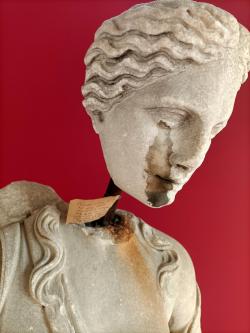
Free admission, Monday to Saturday 10 a.m. - 5 p.m.
An exhibition at the Scuola Normale in Pisa brings four sculptures from Villa Corsini in Castello back to life.
Entitled "The Lives of Marble", but it could also be called "Wounded Art", an original exhibition organised by the Scuola Normale Superiore on the occasion of the opening of the academic year on 18 October, which will last for two months. These four sculptures, long forgotten because they were seriously damaged, come from the Villa Corsini in Castello and belong to the National Archaeological Museum in Florence. These works, three of which have not been open to the public for over fifty years, will be exhibited in Pisa, in the Palazzo della Gherardesca, in a section of the museum space Torre del Conte Ugolino, which reopens especially for the occasion after a prolonged closure due to the pandemic and renovation work.
Through historical-artistic documentation, an extensive series of photographs, together with scientific surveys carried out with new non-invasive techniques on the marble at the NEST Nanotechnology Laboratory, the exhibition recounts the journey through time faced by these artefacts, a statue of Zeus, a male and a female figure, and a sarcophagus, all dating back to the 1st-2nd century AD, amidst damage (for example that of the Florence flood) and subsequent restoration work that has not affected their charm. This is a new way of looking at art, which also focuses on the physical experience of the material of the works, to tell us surprising stories and greatly enrich not only our artistic but also our technical-scientific knowledge. It is also a first attempt to bring back to life some of the sculptures that are still in the storage rooms of Villa Corsini, waiting to tell their own story.
The exhibition, organised by Gianfranco Adornato, Associate Professor of Classical Archaeology, with the collaboration of research assistants Alessia Di Santi and Martina Borroni, will be open to the public free of charge until 18 December (Palazzo della Gherardesca, Piazza dei Cavalieri) and was conceived as part of the research project 'BIO-SCULT: Per una 'bio-grafia' delle sculture all'aperto: dalle collezioni fiorentine al Regio Museo di Luigi Adriano Milani, all'alluvione del 1966", carried out by the Scuola Normale Superiore in collaboration with the National Archaeological Museum of Florence.